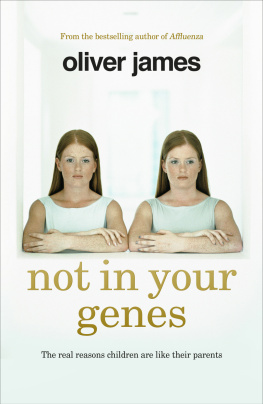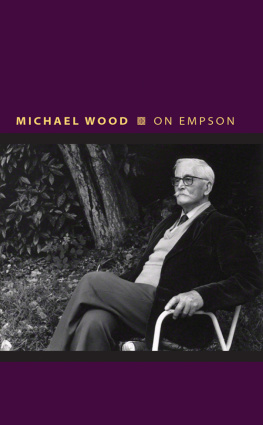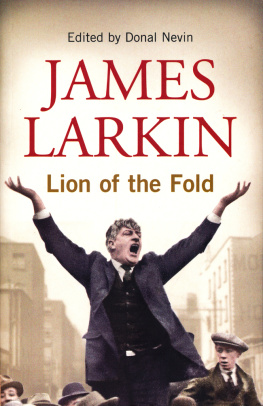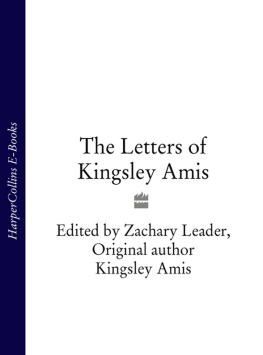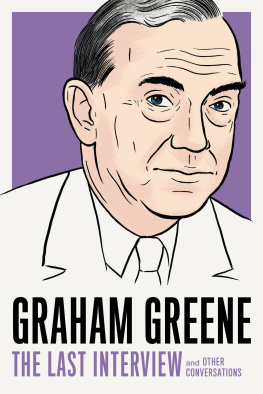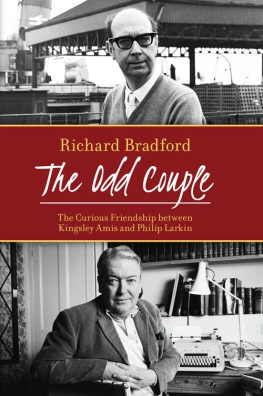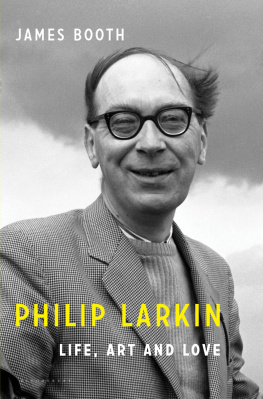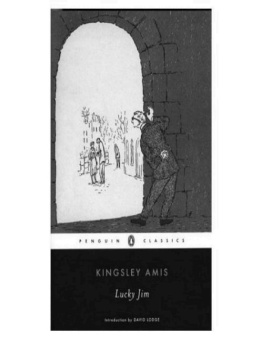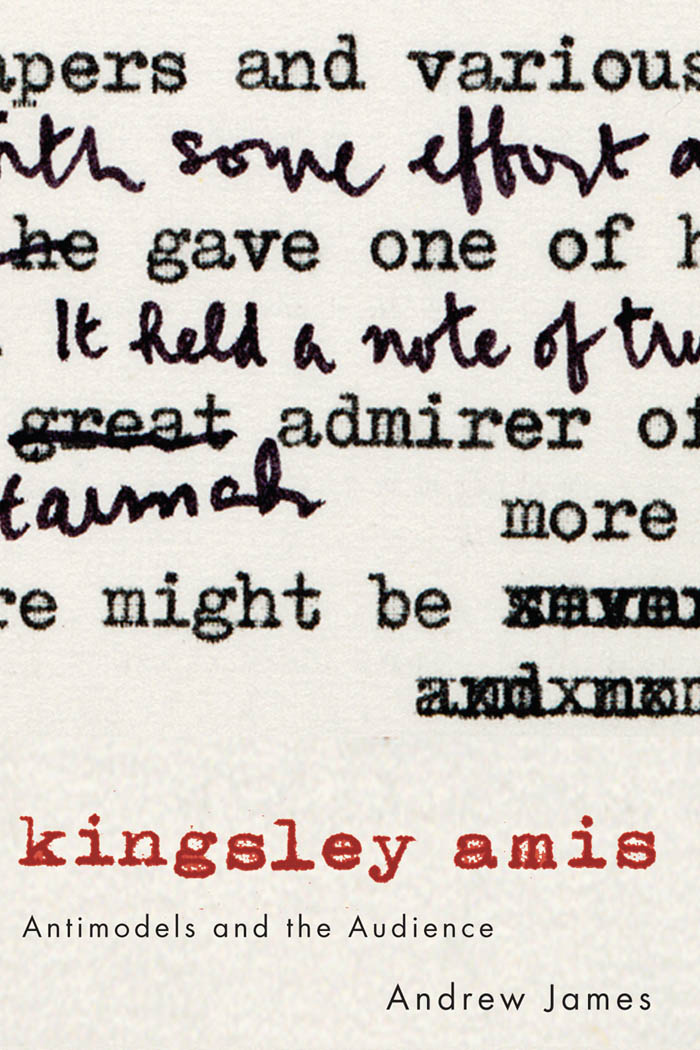KINGSLEY AMIS
Kingsley Amis
Antimodels and the Audience
ANDREW JAMES
McGill-Queens University Press
Montreal & Kingston London Ithaca
McGill-Queens University Press 2013
ISBN 978-0-7735-4136-8
Legal deposit second quarter 2013
Bibliothque nationale du Qubec
Printed in Canada on acid-free paper that is 100% ancient forest free (100% post-consumer recycled), processed chlorine free
This book has been published with the help of a grant from the Canadian Federation for the Humanities and Social Sciences, through the Awards to Scholarly Publications Program, using funds provided by the Social Sciences and Humanities Research Council of Canada.
McGill-Queens University Press acknowledges the support of the Canada Council for the Arts for our publishing program. We also acknowledge the financial support of the Government of Canada through the Canada Book Fund for our publishing activities.
Library and Archives Canada Cataloguing in Publication
James, Andrew, 1968
Kingsley Amis : antimodels and the audience / Andrew James.
Includes bibliographical references and index.
ISBN 978-0-7735-4136-8
1. Amis, Kingsley Criticism and interpretation. 2. Artists in literature. I. Title.
PR6001.M6Z68 2013 828.91409 C2013-900561-7
Typeset by Jay Tee Graphics Ltd. in 10.5/13 Sabon
Contents
Figures
Reproduced courtesy of the Henry E. Huntington Library, San Marino, California
Acknowledgments
Without my father, Bill James, and mother, Ann Maclellan, there would be no me and, hence, no book. In one of my fondest childhood memories I am opening the door to my fathers study to find him behind his desk with a book, classical music rising through rings of Borkum Riff tobacco. He gave up his pipe but has retained a love of literature and learning, and I inherited both of the latter passions. I am grateful to my mother for always encouraging me to read and to voice my opinions about literature, and her varied interests have influenced me in countless positive ways. I thank you both, and my stepmother Carolyn Kirkup, for all that you have done for me and my family, and for your ceaseless support. I would also like to thank my brother Matt, who teaches at the University of Victoria, and sister Caroline, now living in Quebec. Family connections become more important as we age, and I am grateful to have loving parents and siblings.
In 2007, I was granted a sabbatical by Chikushi Jogakuen University, my employer in Japan, to participate in two research projects at the University of Ulster in Coleraine, Northern Ireland, with Professor Richard Bradford. I had taken a leave of absence to do the research projects and qualify for the sabbatical, but spent most of my time in Coleraine working madly away on the manuscript. I am indebted to Professor Bradford and his wife Amy for assisting my family throughout our stay in Coleraine. Many thanks also go to Dr Andrew Keanie for patiently reading through drafts of the manuscript and advising me to broaden my reading patterns in search of other connections and resonances. Professor Stanley Black provided assistance by finding creative ways to overcome administrative red tape. The input of Professor Zachary Leader, author of the last biography of Kingsley Amis, improved the manuscript immeasurably and taught me a great deal about academic writing.
My wife Keiko supplied the emotional support necessary to complete this project by always urging me to keep at it when I sometimes felt that it might never be completed. During the writing of this book, our four children Kathryn, Nick, Josh, and Alex have often asked me what I have been working on and, while I dont think they ever really grasped the concept of antimodels, their presence has motivated me. This book is really for you. It is invested with my heart and dreams and I hope its life, like each of yours, will be long and interesting.
Further thanks go to Keiko for enduring my extended absences for research trips to the Amis archives in the United States and England. My stay at the Huntington Library was made especially enjoyable by a staff member, Juan Gomez, whose wit, knowledge of music, and good humour helped make a month at the library pass with remarkable speed. The staff at all three archives were extremely helpful and patient. I am grateful to Natalie Russell, also at the Huntington, for assisting in the acquisition of the photographic images of manuscript pages which feature on the cover and in the text of this book. The friendship of fellow researcher, Matthew Jenkinson, also helped me to pass many enjoyable breaks between research both in California and at Oxford.
While working on this book, I have been employed at Chikushi Jogakuen University on the southwestern island of Kyushu in Japan. The university has been generous in awarding me both the aforementioned sabbatical leave and a large research grant to spend five weeks in the Amis archives. Two of my colleagues, Dale Goble and Tim Honkomp, have been particularly supportive throughout the writing of the book. Good friends are not easy to find, and you are two of the very best. Other academic friends in Japan who have offered invaluable help, encouragement, and advice include Keiko Hirano, Mark Fenwick, Ronan Brown, and Tom Caton. These four friends and I comprise a reading group and at our meetings I have often bored them with talk of Kingsley Amis and this book. They have always indulged me, and our literary discussions have been memorable.
The staff at McGill-Queens University Press are especially deserving of praise. Kyla Madden is a true professional, who patiently guided me through each phase of the publication process. Many thanks to Ryan Van Huijstee for his role in the books production and for his computer expertise. The copy-editor, Lesley Andrassy, has an amazing knack for simplifying, clarifying, and always finding the best wording. The efforts of these three individuals have, without a doubt, improved my book and I offer each my deepest gratitude.
The Henry E. Huntington Library kindly granted permission to reproduce images of manuscript pages for both the cover and the text of this book. Portions of the book were previously published in English ness Revisited (2009, Cambridge Scholars Press), Life Writing (2010, Palgrave Macmillan), Semblance and Signification (2011, John Benjamins), and Comparisons, Interactions, and Contestations within/ across Cultures (2012, St. Cyril and St. Methodius University Press).
Introduction
Although it has become fashionable to dismiss Kingsley Amis as a nave realist who simply assumes the transparency of language and a mind-independent reality (Baker 2005, 550), he was always concerned with the role of the artist in society and expressed his ever-changing views on this subject through the subtexts of over twenty novels. He did this in three principal ways: through the use of artistic antimodels, or characters connected to art that tell us how not to create; by invoking other writers and formative literary influences to show the superiority of his own methods; and by examining the role of the audience in the creative process. Though his novels are consistently rich and complex, his ideas on art remained somewhat dogmatic until the publication of his first genre experiment, The Green Man (1969); this novel and Ending Up (1974) mark transitional points in his development as an artist. In the novels written after 1970, Amis devotes more time to examining the role of the audience in artistic creation and the relationships of other characters to the antimodels. He also looked at himself as a person and writer with a more critical eye. Artistically the emphasis shifts from self-praise to self-appraisal and this change is evident in the subtext of


